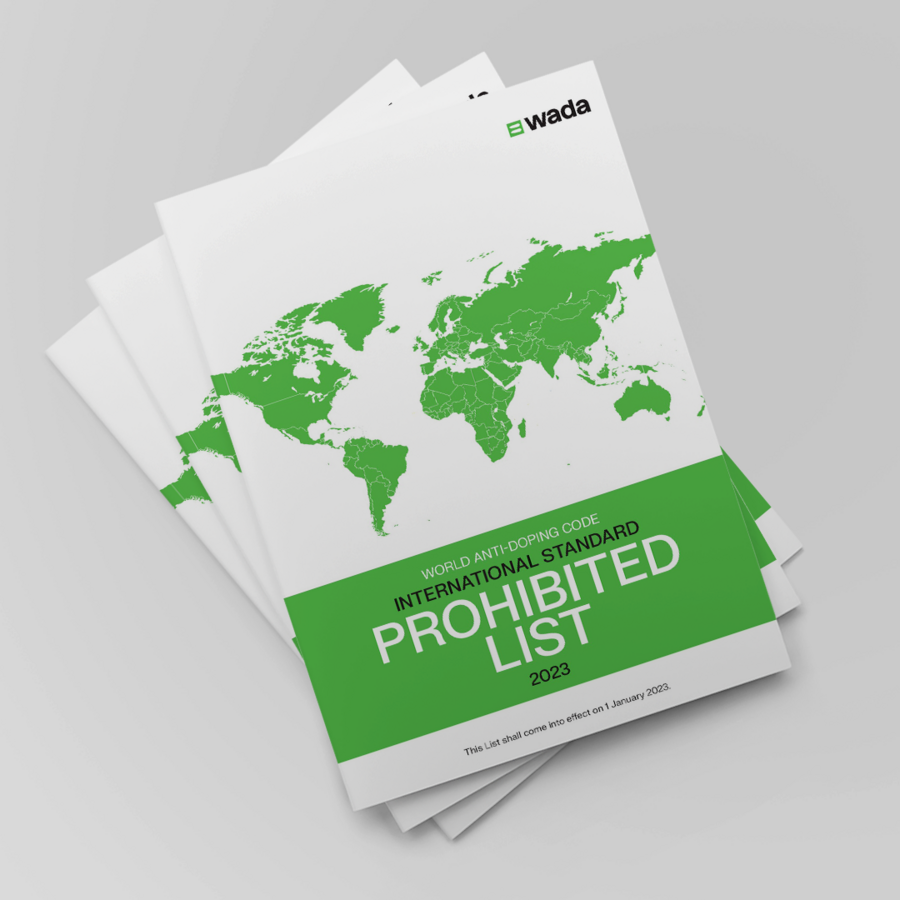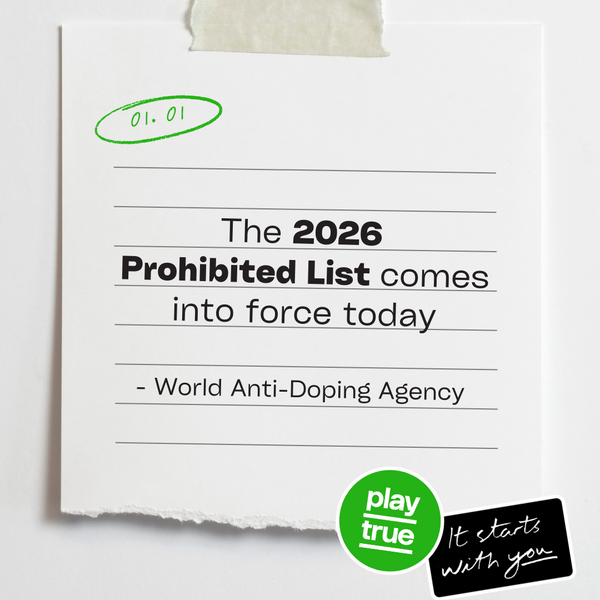Releases
WADA publishes 2023 Prohibited List

Agency calls on athletes, entourage and all stakeholders to note major modification concerning tramadol that is to take effect in 2024
Today, the World Anti-Doping Agency (WADA) publishes the 2023 List of Prohibited Substances and Methods (List), which was approved by WADA’s Executive Committee (ExCo) during its meeting on 23 September 2022 and enters into force on 1 January 2023.
We also publish:
- the 2023 Summary of Major Modifications and Explanatory Notes as compared to the 2022 List; and
- the 2023 Monitoring Program, which includes substances that are not on the List, but that WADA wishes to monitor in order to detect potential patterns of misuse in sport.
The List is one of the eight International Standards that are mandatory for all Signatories of the World Anti-Doping Code (Code). It designates what substances and methods are prohibited both in- and out-of-competition and which substances are banned in particular sports.
WADA Director General Olivier Niggli said: “As it does every year, WADA led an extensive consultation process concerning the Prohibited List, which involves qualified experts in the fields of science and medicine from around the world. This process allows WADA to review scientific research and identify the latest doping trends to ensure that any new or existing substance or method that may meet the criteria for addition to the List are considered, so as to protect athlete health and the integrity of clean sport worldwide.”
Major Modifications for 2023
All Major Modifications for 2023 are outlined in the 2023 Summary of Major Modifications and Explanatory Notes.
Major Modification concerning tramadol for 2024
It should be noted that, also on 23 September, the ExCo endorsed the recommendation by WADA’s List Expert Advisory Group to prohibit the narcotic tramadol in competition, effective 1 January 2024.
The delay in implementation is to provide an additional year for broad communication and education of athletes, their entourage and medical personnel so that there is a better understanding of the practical implementation of tramadol prohibition in competition.
It will also give time to the scientific community to adjust the exact procedural details so that fairness can be ensured for athletes. In addition, it gives sports authorities time to develop educational tools for athletes, and for medical and support personnel to address the safe use of tramadol for clinical purposes within anti-doping.
Tramadol has been on WADA’s Monitoring Program and data gathered through that program have indicated significant use in sports. Tramadol abuse, with its dose-dependent risks of physical dependence, opiate addiction and overdoses in the general population, is of concern and has led to it being a controlled drug in many countries. Research studies funded by WADA, as referenced in the Explanatory Note have also confirmed the potential for tramadol to enhance sports performance.
Mr. Niggli continued: “We encourage athletes, their entourage and all stakeholders to acquaint themselves with the Summary of Major Modifications to avoid inadvertent use of substances and methods that are prohibited in sport for 2023. In particular, we kindly ask all Anti-Doping Organizations around the world to share the List and its related documents with athletes, their entourage and other relevant stakeholders under their jurisdiction to highlight the important updates concerning the usage of tramadol effective 1 January 2024.”
Annual List Review Process
WADA leads an annual revision process concerning the List, beginning with an initial meeting in January and concluding with the publication of the List by 1 October. This is an extensive consultation process that includes WADA’s List Expert Advisory Group gathering information including the latest scientific and medical research, trends, and intelligence gathered from law enforcement and pharmaceutical companies; circulating a draft List among stakeholders; and, taking their submissions into consideration to revise the draft, followed by review by the Agency’s Health, Medical and Research (HMR) Committee. The HMR Committee then makes its recommendations to WADA’s ExCo, which approves the List during its September meeting.
For a substance or method to be added to the List, it must be determined that it meets at least two of the following three criteria:
- It has the potential to enhance or enhances sport performance
- It represents an actual or potential health risk to the athletes
- It violates the spirit of sport
The List is released three months ahead of it taking effect so that athletes, their entourage and other stakeholders can acquaint themselves with any modifications. Ultimately, athletes are responsible for prohibited substances found in their body and prohibited methods found to have been used. Athlete entourage are also liable for Anti-Doping Rule Violations if determined to be complicit. Consequently, if there is any doubt as to the status of a substance or method, it is important that they contact their respective Anti-Doping Organizations (International Federation or National Anti-Doping Organization) for advice.
The Therapeutic Use Exemption Program
It should be noted that for athletes who have a legitimate medical reason for using a prohibited substance or method that is on the List, they can apply for a Therapeutic Use Exemption (TUE) to determine whether they meet the criteria outlined in the International Standard for Therapeutic Use Exemptions (ISTUE). The TUE Program is a rigorous and necessary part of elite sport which has overwhelming acceptance from athletes, physicians and anti-doping stakeholders.
Educational resources
In addition to the documents linked above, WADA has provided, or will provide, a number of educational resources as part of its Code Implementation Support Program (CISP), which can be accessed on the Agency’s Anti-Doping Education and Learning Platform (ADEL). These resources include:
- A CISP Checklist – Implementing Revised List (available now)
- Athlete and Athlete Support Personnel (ASP) Factsheet on tramadol (to be available in November)
- Medical Professionals Factsheet on tramadol (to be available in November)
- Athlete and ASP Guide to the 2023 List (to be available in January 2023)
Also, WADA will look to develop additional educational activities, such as webinars, to support ADOs in their efforts to educate their target populations about the change regarding tramadol.
Languages and Formats
The 2023 Prohibited List; the 2023 Summary of Modifications and Explanatory Notes; and the 2023 Monitoring Program are available for download on WADA’s website in English and French with Spanish to follow in the coming weeks.
Stakeholders wishing to translate the List into other languages are kindly asked to signal their interest to code@wada-ama.org. WADA will then provide the necessary files and, once the translation is finalized, will make the translated List available on the Agency’s website.
The List’s mobile-friendly digital edition will go live on 1 January 2023.

